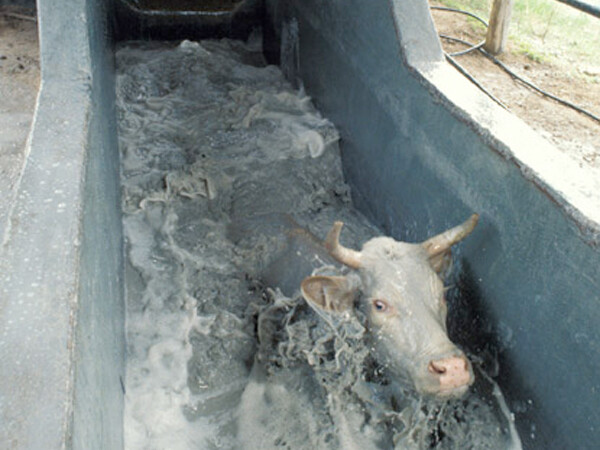

Plunge dipping is the most effective way to control ticks on animals effectively, especially inside the ears and behind the tail, the preferred site of many ticks. However, failure of tick control can occur if the correct procedures are not used. Below are some guidelines to follow inorder to be effective.
Before Dipping: Check the water level , the tank must be full. Make sure to open the inlet pipe and close outlet.
Dipping: Ensure dip is mixed according to manufacturers instructions, paying attention to correct strengths, premixing and mixing instructions etc. Understrength dipping is never cost effective – it only leads to incomplete tick control and resistance.
Agitate the dipwash. This can be done effectively by running 20-30 head through the dip and then returning them to the main herd to be dipped again. Make sure the dipwash is not too dirty. This can render the dip less effective. As dips ‘strip out’ a maximum of 500 head should be dipped before replenishing the dip. All cattle must be dipped every dip day with the exception of very small calves which should be hand-treated. An accurate cattle count must be made and recorded. Dipping intervals must be adhered to according to the dip used and manufacturer’s instructions. (Recommended +/- 45 dippings/year)
All animals must be submerged completely. If the diptank is silted up so that animals do not submerge it must be emptied and cleaned. The operator can use a long forked stick to push heads under if necessary.
After dipping: Close inlet and open outlet pipes. Clean collecting pen and drainage pen to prevent build up of mud and dung. Clean the footbaths, repair the broken pens and collect the remaining dip and empty dip containers and dispose of them suitably.
 Contact Jaguza Support
Contact Jaguza Support